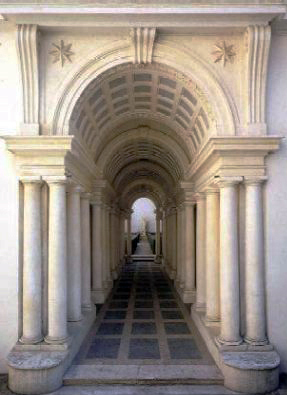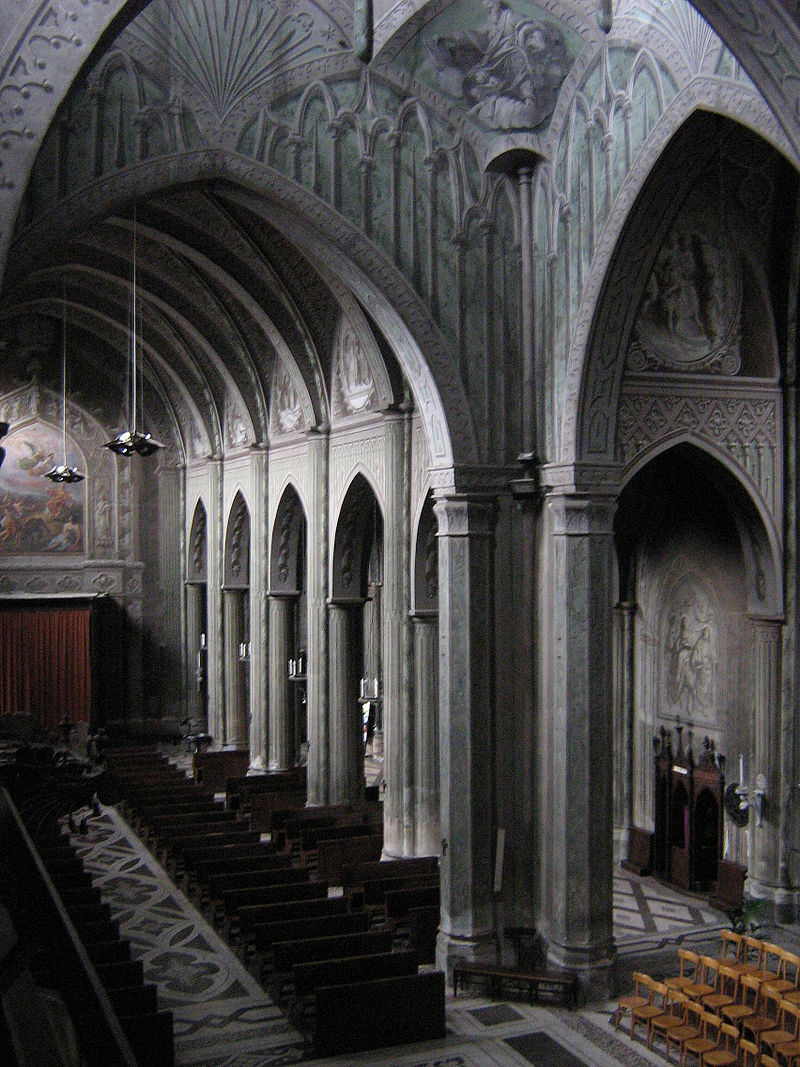Trompe l’oeil
Trompe l’oeil is the term used for a technique that creates the illusion of reality. It is French for ‘fool the eye’ or ‘deceive the eye’. It has long been used by artists for paintings and murals, but can also be found in architecture where walls, ceilings, domes and other surfaces are painted with designs that ‘trick’ the observer into seeing other features such as windows, columns, stonework, ornaments and so on.
The first instance of trompe l’oeil perspective techniques being used in architecture can be found in the medieval period, but it became increasingly common during the Renaissance. Artists were often employed to paint the inside of churches, to give walls the appearance of decorative features, columns, windows, views and so on. Perhaps the most famous example of the technique is Michelangelo’s frescoes on the ceiling of the Sistine Chapel in the Vatican.
The technique is also found in the design of stage sets where forced perspective can be used to give the impression that the stage is deeper than it is.
See also: Trompe l'oeil (part 2)
[edit] Related articles on Designing Buildings
- Architectural styles.
- Architrave.
- Arts and craft movement.
- Bas-relief.
- Baroque architecture.
- Classical orders in architecture.
- Cornice.
- Elements of classical columns.
- English architectural stylistic periods.
- Entablature.
- Fresco.
- Frieze.
- Finishes.
- Gargoyle.
- Grotesque.
- Large-scale murals.
- Nineteenth century architecture.
- Parallax.
- Patination.
- Pilaster.
- Perspective.
- Scagliola.
- Skeuomorphism.
- Stained glass.
- Tessera.
- Trompe l'oeil (part 2).
[edit] External references
IHBC NewsBlog
Images from inside a Grade II listed hotel show the scale of its collapse
The Corbett Arms in Tywyn has fallen into serious disrepair.
Old Sarum fire in listed (& disputed) WW1 Hangar - Wiltshire Council has sought legal advice after fire engulfed a listed First World War hangar that was embroiled in a lengthy planning dispute.
UK Antarctic Heritage Trust launches ‘Virtual Visit’ website area
The Trust calls on people to 'Immerse yourself in our heritage – Making Antarctica Accessible'
Southend Council pledge to force Kursaal owners to maintain building
The Council has pledged to use ‘every tool in the toolbox’ if urgent repairs are not carried out.
HE’s Research Magazine publishes a major study of the heritage of England’s suburbs
The article traces the long evolution of an internal programme to research 200 years of suburban growth
IHBC Context 183 Wellbeing and Heritage published
The issue explores issues at the intersection of heritage and wellbeing.
SAVE celebrates 50 years of campaigning 1975-2025
SAVE Britain’s Heritage has announced events across the country to celebrate bringing new life to remarkable buildings.
IHBC Annual School 2025 - Shrewsbury 12-14 June
Themed Heritage in Context – Value: Plan: Change, join in-person or online.
200th Anniversary Celebration of the Modern Railway Planned
The Stockton & Darlington Railway opened on September 27, 1825.
Competence Framework Launched for Sustainability in the Built Environment
The Construction Industry Council (CIC) and the Edge have jointly published the framework.















